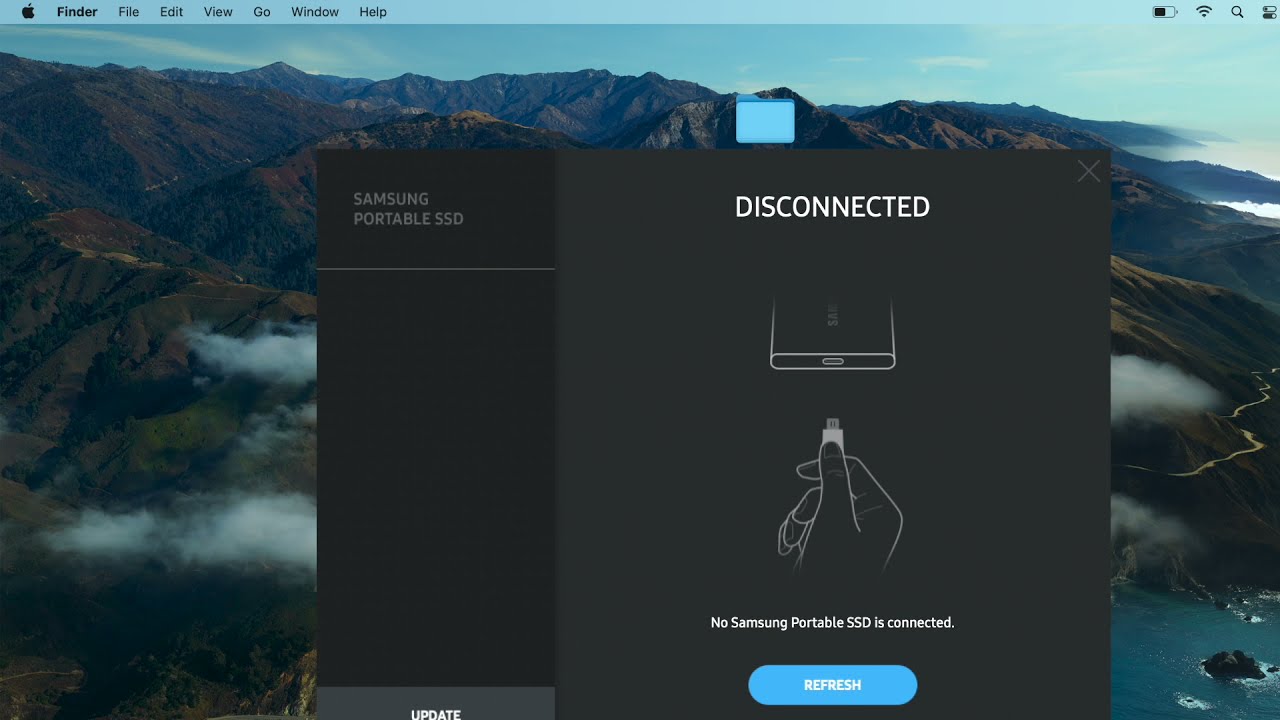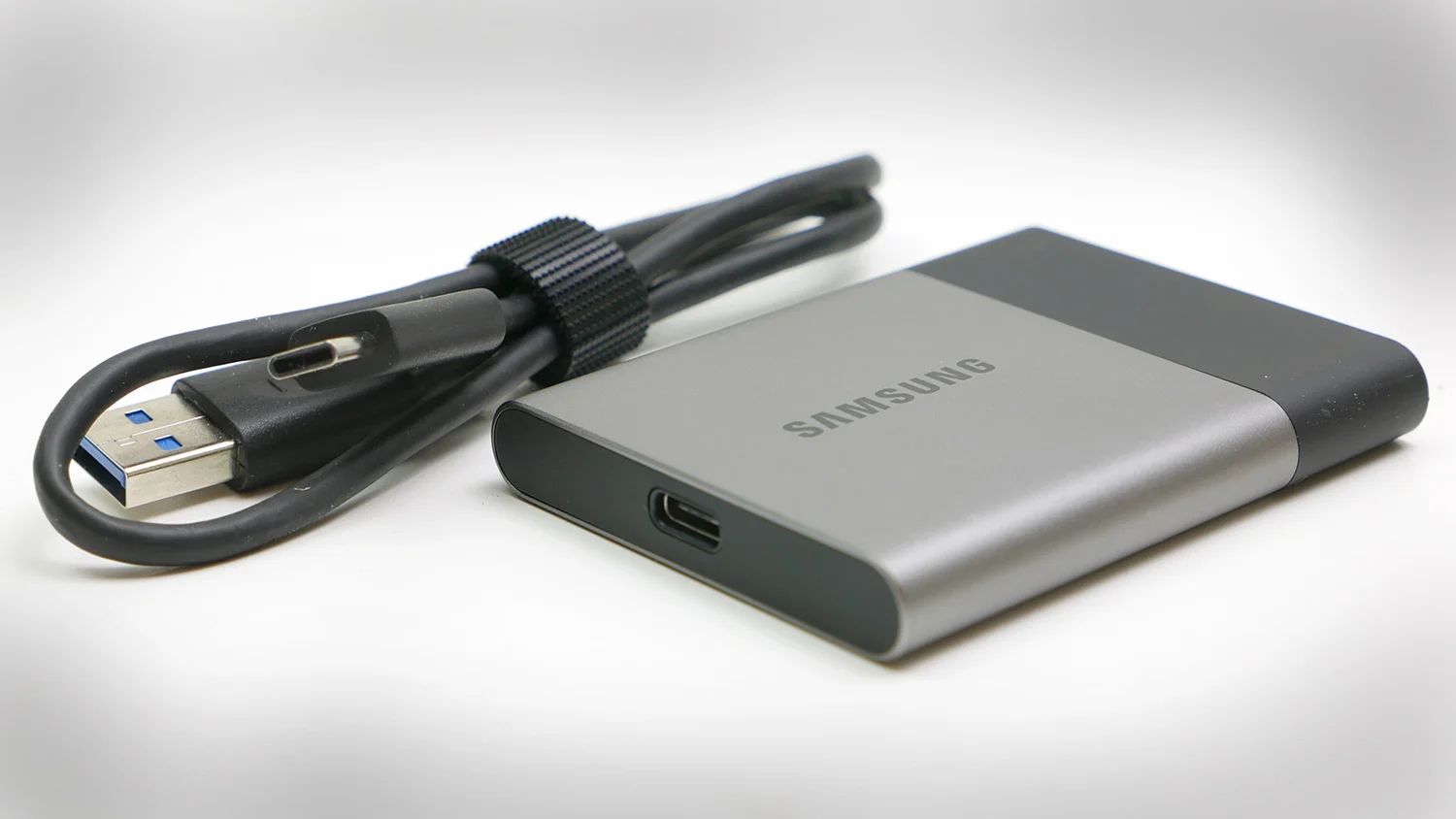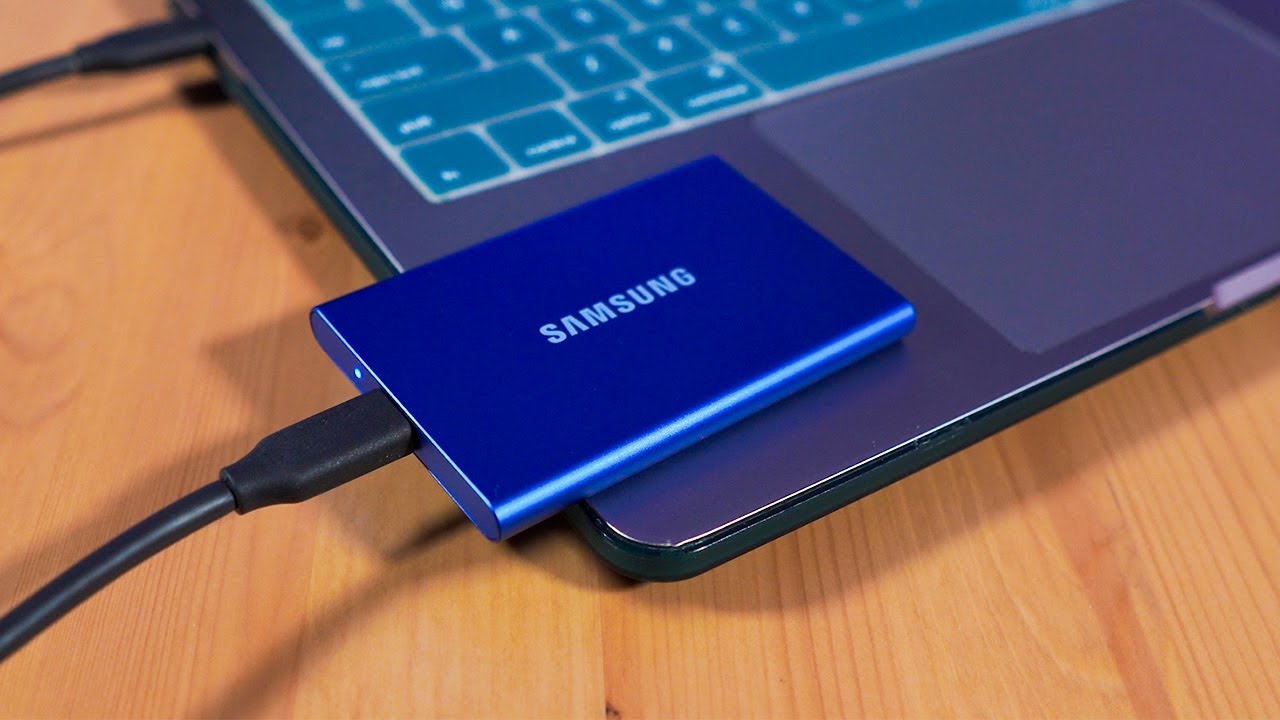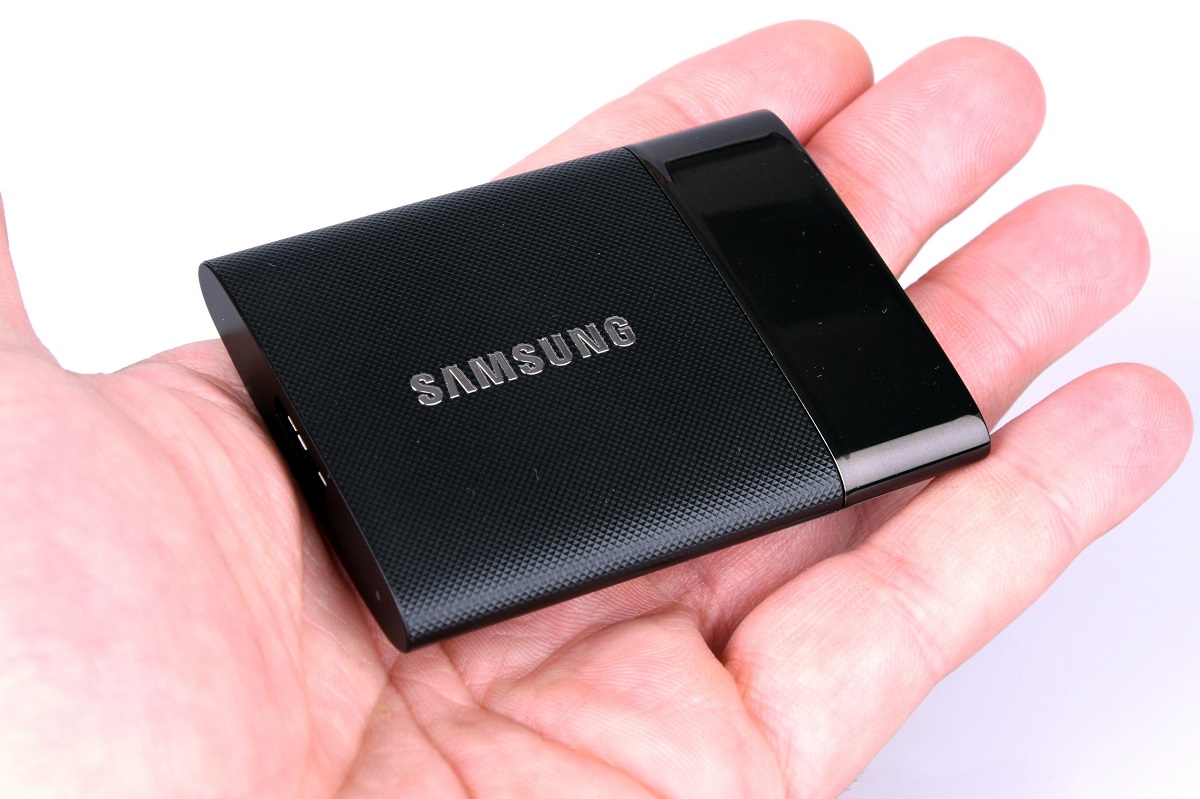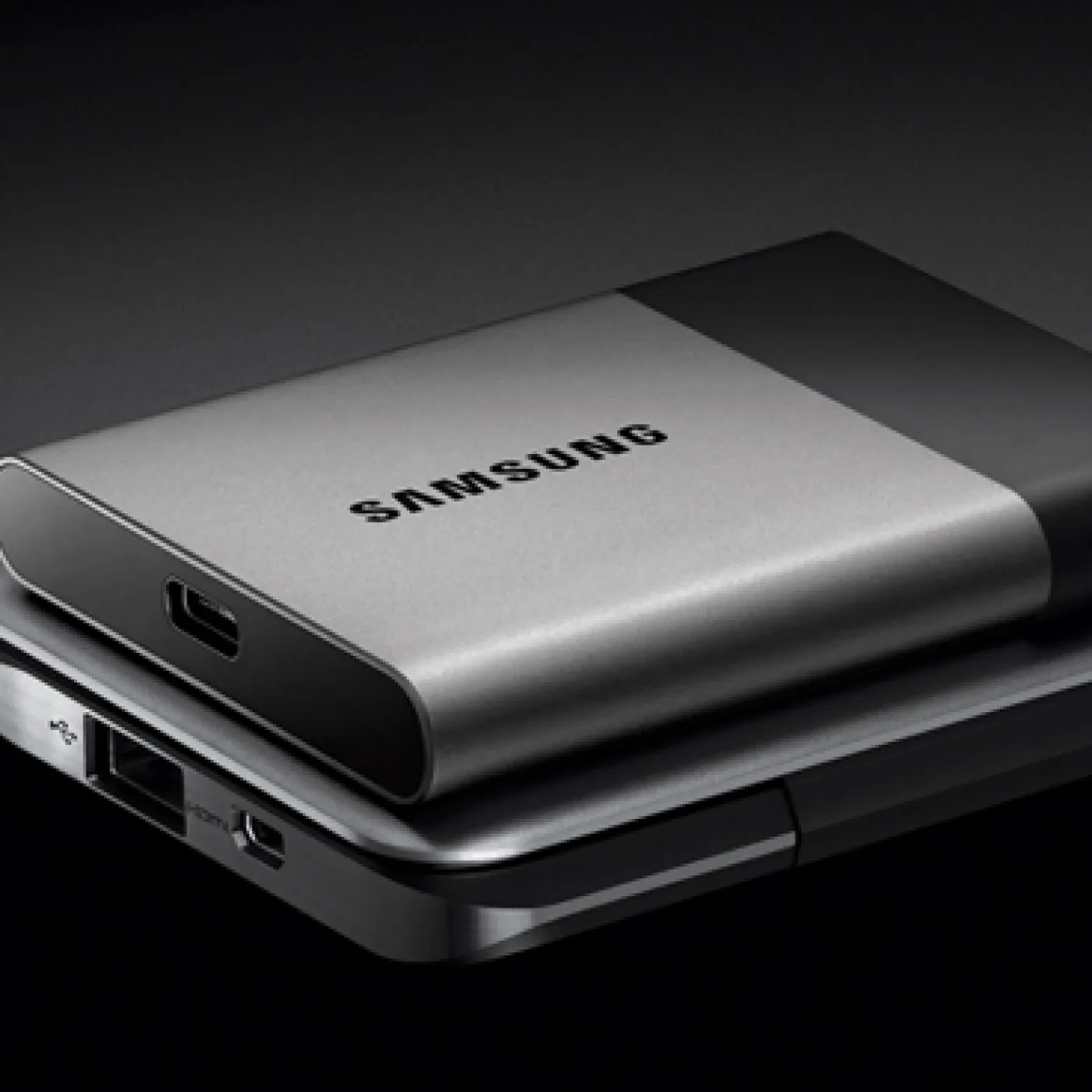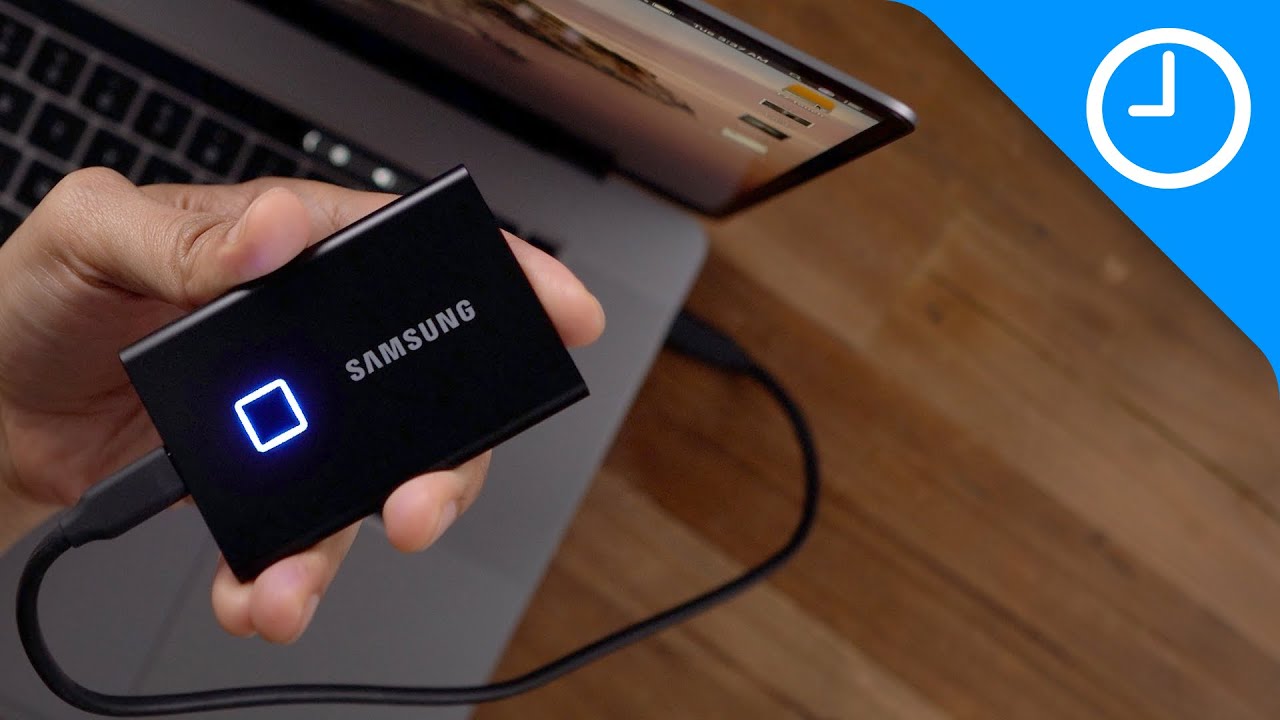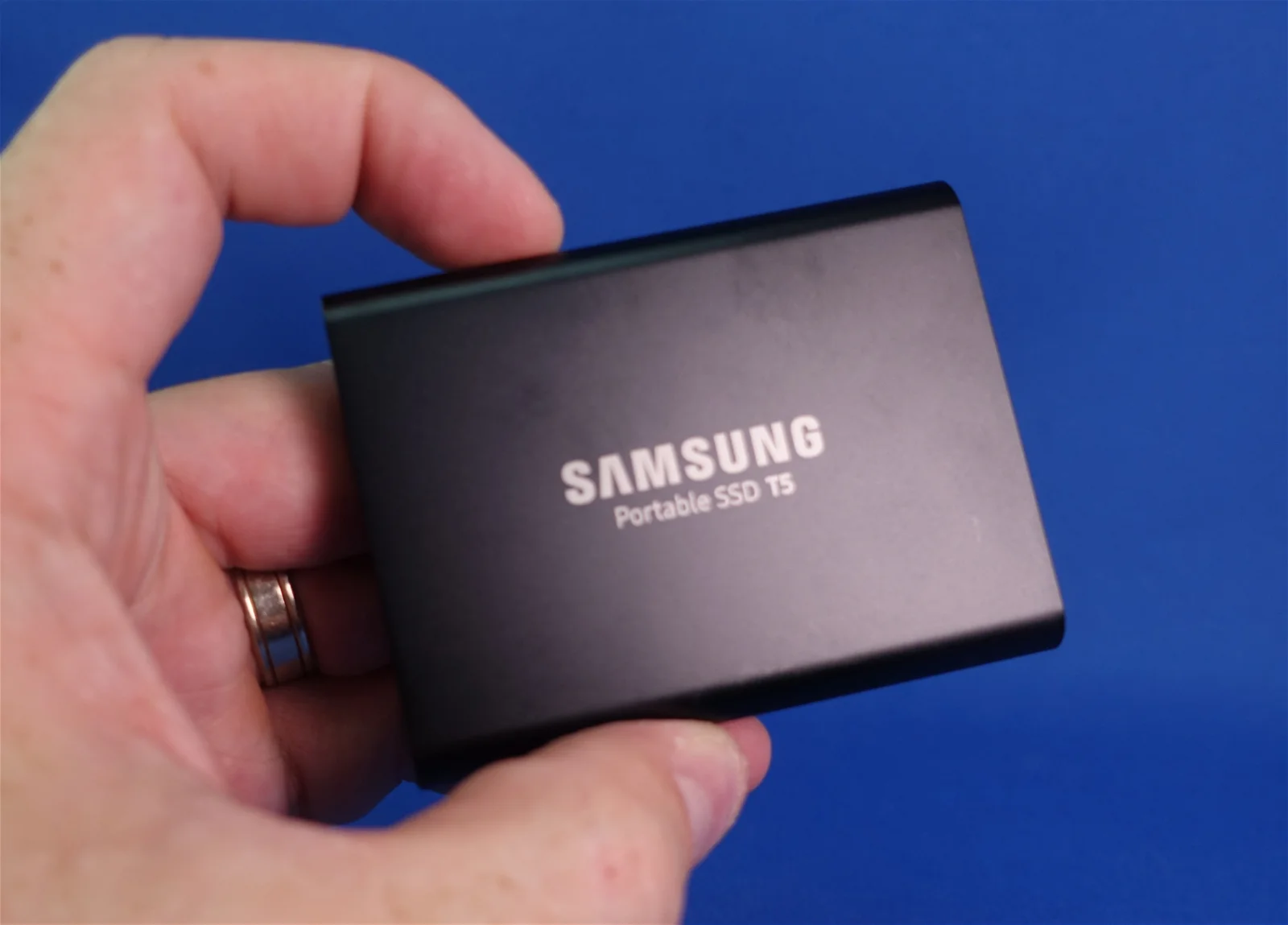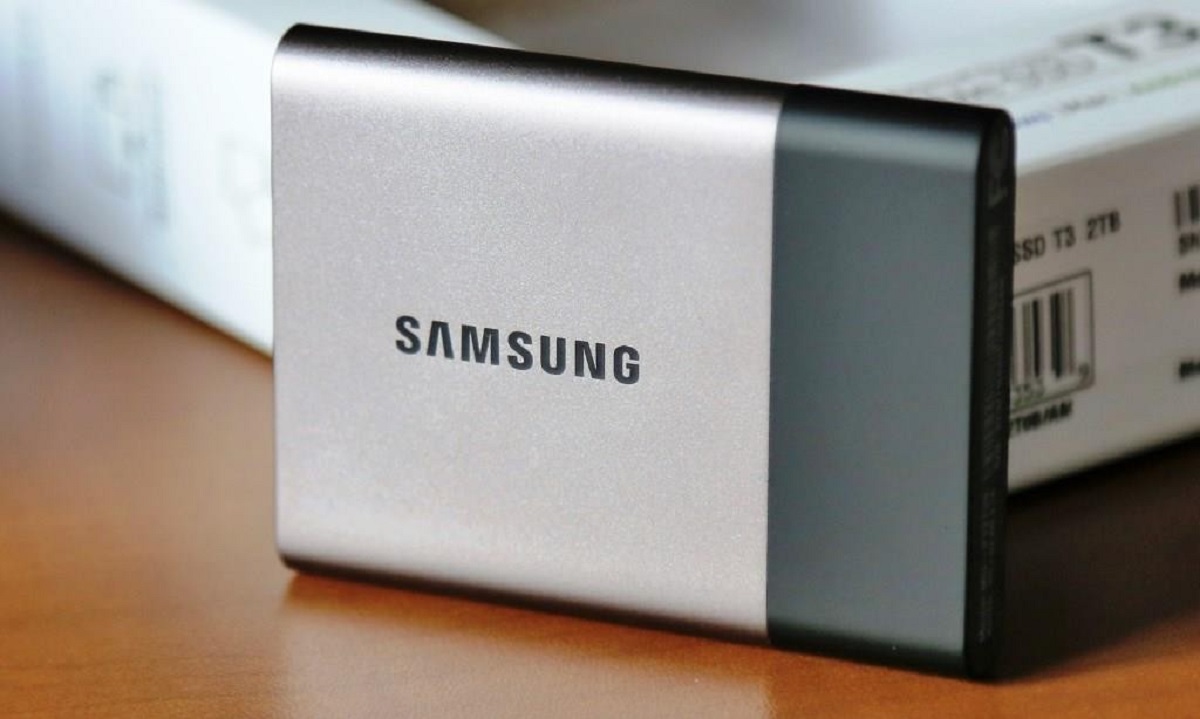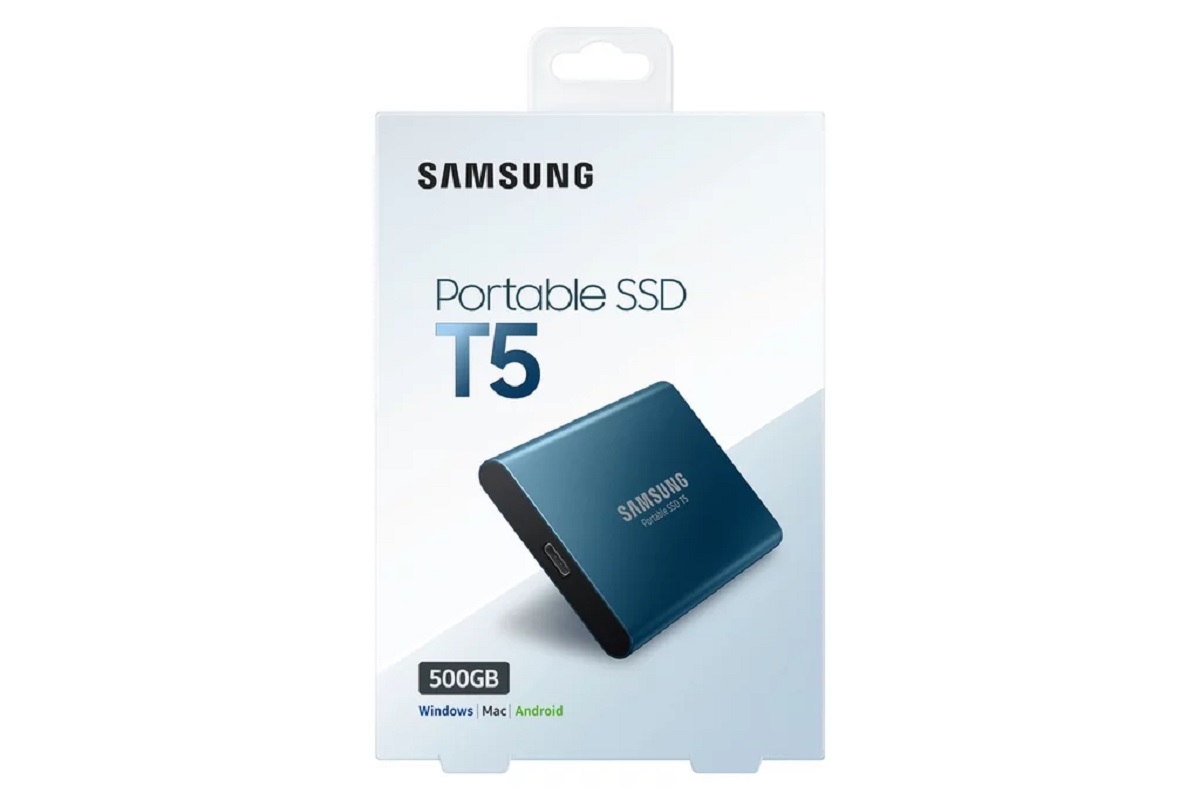Overview
The Samsung Portable SSD is a popular and convenient storage solution for many users. With its compact size and fast data transfer speeds, it has become a go-to device for storing and transferring files. However, some users may encounter a common issue where the Samsung Portable SSD displays the message “Disconnected” when connected to their computer. This can be frustrating and confusing, as it prevents them from accessing their important files and using the device as intended.
This article will explore the possible causes behind the “Disconnected” message on the Samsung Portable SSD and provide potential solutions to resolve the issue. By understanding the underlying reasons for this problem, users can take the necessary steps to get their device up and running again.
It’s important to note that the “Disconnected” message can have multiple causes, ranging from simple connectivity issues to more complex software or hardware problems. By diagnosing the root cause accurately, users can save time and effort in finding an appropriate solution.
In the following sections, we will discuss several potential causes for the “Disconnected” message on the Samsung Portable SSD and provide step-by-step instructions to address each issue. Whether it’s an incompatible USB connection, software conflict, power saving settings, or a faulty SSD, we will guide you through troubleshooting and resolving the problem.
It’s worth mentioning that the solutions provided are general troubleshooting steps and may not apply to every scenario. If you are experiencing difficulties with your Samsung Portable SSD, we recommend following the steps outlined in this article. However, if the problem persists or you require further assistance, it may be advisable to reach out to Samsung support or consult a professional technician.
Problem with USB Connection
One of the common reasons why the Samsung Portable SSD displays the “Disconnected” message is due to a problem with the USB connection. This can occur if the USB port or cable is faulty, preventing the SSD from properly connecting to the computer.
A damaged or loose USB cable can disrupt the connection between the Samsung Portable SSD and the computer. Try using a different USB cable to rule out any issues with the cable itself. Additionally, ensure that the USB cable is securely plugged into both the SSD and the USB port on the computer.
In some cases, the issue may lie with the USB port on the computer. USB ports can become worn out over time or suffer from physical damage. Try connecting the Samsung Portable SSD to a different USB port on the computer to see if the issue persists. If possible, try using a USB 3.0 port, as these ports provide faster data transfer speeds and better compatibility with the SSD.
Another factor to consider is the compatibility of the USB connection. The Samsung Portable SSD is designed to work with USB 3.0 and USB 3.1 ports for optimal performance. While it may still work on older USB 2.0 ports, there may be limitations in terms of speed and functionality. If you are using an older computer with USB 2.0 ports, consider upgrading to a USB 3.0 or higher port to ensure seamless connectivity with the SSD.
If you have ruled out any issues with the USB cable or ports, it’s also worth checking the USB drivers on your computer. Outdated or corrupted USB drivers can cause compatibility issues and result in the “Disconnected” message. To address this, navigate to the Device Manager on your computer, locate the USB drivers, and update them to the latest version.
In summary, when encountering the “Disconnected” message with the Samsung Portable SSD, it is important to check the USB connection. Ensure that the USB cable is in good condition, securely connected to both the SSD and the computer. Try using different USB ports on the computer, preferably USB 3.0 or higher, to troubleshoot any issues with compatibility. Finally, check and update the USB drivers on your computer to ensure proper communication between the SSD and the system.
Incompatible USB Port or Cable
Another potential reason why the Samsung Portable SSD may display the “Disconnected” message is due to an incompatible USB port or cable. Incompatibility can arise if the USB port or cable does not meet the necessary specifications for proper connection and communication with the SSD.
When it comes to USB ports, the Samsung Portable SSD is designed to work optimally with USB 3.0 and USB 3.1 ports. These ports provide faster data transfer speeds and better compatibility with the device. If you are using an older computer or a device with only USB 2.0 ports, it may not provide the necessary power or data throughput for the SSD to function correctly.
In such cases, consider upgrading your computer’s USB ports to USB 3.0 or higher. This will ensure better compatibility with the Samsung Portable SSD and allow for faster data transfers. USB 3.0 and higher ports have a blue color-coded connector, making them easily distinguishable from older USB 2.0 ports.
Additionally, the USB cable used to connect the Samsung Portable SSD to the computer can also affect compatibility. It is important to use a high-quality USB cable that meets the USB standards required by the SSD. A subpar or damaged cable may fail to establish a stable connection, leading to the “Disconnected” message.
If you suspect that the USB cable is the cause of the issue, try using a different USB cable to connect the Samsung Portable SSD to your computer. Ensure that the replacement cable is capable of transmitting data and is compatible with USB 3.0 or higher standards. This will help eliminate any issues caused by a faulty or incompatible USB cable.
In summary, an incompatible USB port or cable can contribute to the “Disconnected” message with the Samsung Portable SSD. Ensure that your computer has USB 3.0 or higher ports to provide optimal compatibility with the device. Use a high-quality USB cable that meets the necessary USB standards to establish a stable and reliable connection between the SSD and the computer.
Software or Driver Issues
Software or driver conflicts can also lead to the “Disconnected” message on the Samsung Portable SSD. In some cases, outdated or incompatible software or drivers on your computer can prevent the SSD from functioning properly.
One of the first steps to troubleshoot software-related issues is to ensure that your operating system is up to date. Regularly check for updates and install them as they become available. Operating system updates often include bug fixes and compatibility improvements, which can resolve issues with peripheral devices like the Samsung Portable SSD.
In addition to the operating system, it is essential to keep the firmware of the Samsung Portable SSD up to date. Firmware updates often address compatibility issues and improve the overall performance of the SSD. Visit the Samsung website and search for your specific SSD model to download and install the latest firmware update.
If you have recently installed any software or drivers related to external storage devices or disk management, it is possible that these applications are causing conflicts with the Samsung Portable SSD. To troubleshoot this, try uninstalling or disabling any recently installed software or drivers and see if the “Disconnected” message disappears. If it does, it indicates a compatibility issue between the newly installed software and the SSD.
To further investigate software conflicts, you can also try connecting the Samsung Portable SSD to a different computer. If the SSD works fine on another computer, it suggests that the issue is specific to your computer’s software or drivers.
If you suspect that a specific driver is causing the problem, you can try updating or reinstalling the driver. Open the Device Manager on your computer, locate the Samsung Portable SSD under the “Disk drives” section, right-click on it, and choose “Update driver” or “Uninstall device.” Follow the on-screen prompts to perform the necessary actions.
In summary, software or driver issues can contribute to the “Disconnected” message on the Samsung Portable SSD. Keep your operating system and SSD firmware up to date, as updates often address compatibility issues. Uninstall or disable any recently installed software or drivers that may be conflicting with the SSD. Additionally, consider updating or reinstalling the SSD driver through the Device Manager to ensure proper communication between the SSD and the computer.
Power Saving Settings
The power saving settings on your computer can sometimes interfere with the connection and functionality of the Samsung Portable SSD, leading to the “Disconnected” message. Power-saving features are designed to conserve energy by turning off or reducing power to certain devices when they are not in use. However, these settings may inadvertently impact the performance of the SSD.
To troubleshoot power-saving issues, access the power settings on your computer and adjust them to ensure that the USB ports remain powered and active even during periods of inactivity. This will prevent the SSD from being disconnected or put into a low-power state.
To change the power settings on Windows, navigate to the Control Panel and select “Power Options.” Look for the power plan settings and click on “Change plan settings” for the active power plan. From there, you can modify the settings for “USB selective suspend” or “USB power saving mode.” Ensure that these options are disabled or set to a state that allows continuous power supply to the USB ports.
On macOS, go to “System Preferences” and select “Energy Saver.” Look for any settings related to USB power saving or sleep mode and disable them. Keeping the USB ports active and providing constant power will help maintain a stable connection with the Samsung Portable SSD.
In some cases, the power settings may be overridden by specific software or driver configurations. Ensure that any third-party software, such as disk management tools or power management utilities, does not interfere with the power settings for the USB ports. Try disabling or uninstalling these utilities temporarily to see if it resolves the “Disconnected” issue.
It’s important to note that adjusting power settings may slightly impact the overall power consumption of your computer. However, the trade-off is necessary to ensure proper functionality and connectivity of the Samsung Portable SSD.
In summary, power-saving settings on your computer can contribute to the “Disconnected” message on the Samsung Portable SSD. Adjust the power settings to ensure that the USB ports remain powered and active, preventing the SSD from being disconnected or put into a low-power state. Disable any power-saving options related to USB ports in the power settings of your operating system. Additionally, check for any third-party software or drivers that may override the power settings and disable them if necessary.
Faulty SSD or Hardware Issues
In some cases, the “Disconnected” message on the Samsung Portable SSD may be an indication of a faulty SSD or hardware-related issues. While relatively rare, these issues can occur and prevent the SSD from properly connecting and functioning.
If you have followed all the troubleshooting steps mentioned earlier and still encounter the “Disconnected” message, it is worth considering the possibility of a faulty SSD. The SSD may have encountered a hardware failure or a manufacturing defect that is causing the issue.
To determine if the SSD is faulty, you can try connecting it to a different computer or use a different USB cable. If the “Disconnected” message persists across multiple computers and cables, it suggests a hardware problem with the SSD.
In such cases, it is recommended to contact the Samsung support team or refer to the device’s warranty for repair or replacement options. They will be able to provide further guidance and assistance in diagnosing and resolving any hardware-related issues with the SSD.
Another possible hardware issue to consider is the USB port on the SSD itself. Over time, the USB port may become loose or damaged, resulting in an unreliable connection. Inspect the USB port on the SSD for any visible signs of damage or misalignment. If you notice any issues, it may be necessary to have the SSD repaired or replaced.
In rare cases, other hardware components or configurations on your computer may cause conflicts or issues with the Samsung Portable SSD. This can include incompatible motherboard configurations, faulty USB controllers, or issues with power supply stability. If you suspect a hardware conflict, it may require expert technical assistance to diagnose and resolve the problem.
In summary, while not as common, a faulty SSD or hardware-related issues can contribute to the “Disconnected” message on the Samsung Portable SSD. If the issue persists across multiple computers and cables, it suggests a hardware problem with the SSD. Contact Samsung support or refer to the warranty for repair or replacement options. Inspect the USB port on the SSD for any visible damage. In rare cases, other hardware components or configurations may cause conflicts, requiring expert technical assistance to diagnose and resolve the issue.
How to Fix the Issue
If you are facing the “Disconnected” message on your Samsung Portable SSD, there are several steps you can take to resolve the issue and regain proper functionality of the device.
1. Check the USB Connection: Start by ensuring that the USB cable is securely connected to both the SSD and the computer. Try using a different USB cable to rule out any issues with the cable itself. Additionally, connect the SSD to a different USB port on your computer, preferably a USB 3.0 or higher port, to troubleshoot any compatibility issues.
2. Update Software and Drivers: Keep your operating system and SSD firmware up to date. Install any available updates as they often include bug fixes and compatibility improvements. Update the USB drivers on your computer through the Device Manager to ensure proper communication with the SSD.
3. Disable Power Saving Settings: Adjust the power settings on your computer to prevent the USB ports from turning off or entering a low-power state. Disable any power-saving options related to USB ports in the power settings of your operating system. This will help maintain a stable and continuous connection with the Samsung Portable SSD.
4. Uninstall Conflicting Software: If you have recently installed any software or drivers related to external storage devices or disk management, try uninstalling or disabling them temporarily. Some applications may conflict with the SSD, causing the “Disconnected” message. Monitor the SSD’s behavior after removing the software to see if the issue is resolved.
5. Check for Hardware Issues: If none of the above steps help, it’s possible that there may be a hardware-related issue with the SSD or other components on your computer. Connect the SSD to a different computer or try a different USB cable to rule out any hardware issues. If the problem persists, contact Samsung support or refer to the warranty for further assistance and possible repair or replacement options.
Remember to follow the troubleshooting steps in the order provided and test the SSD’s functionality after each step to monitor any changes. If the issue persists or you require additional assistance, it is recommended to reach out to Samsung support or consult with a professional technician.







